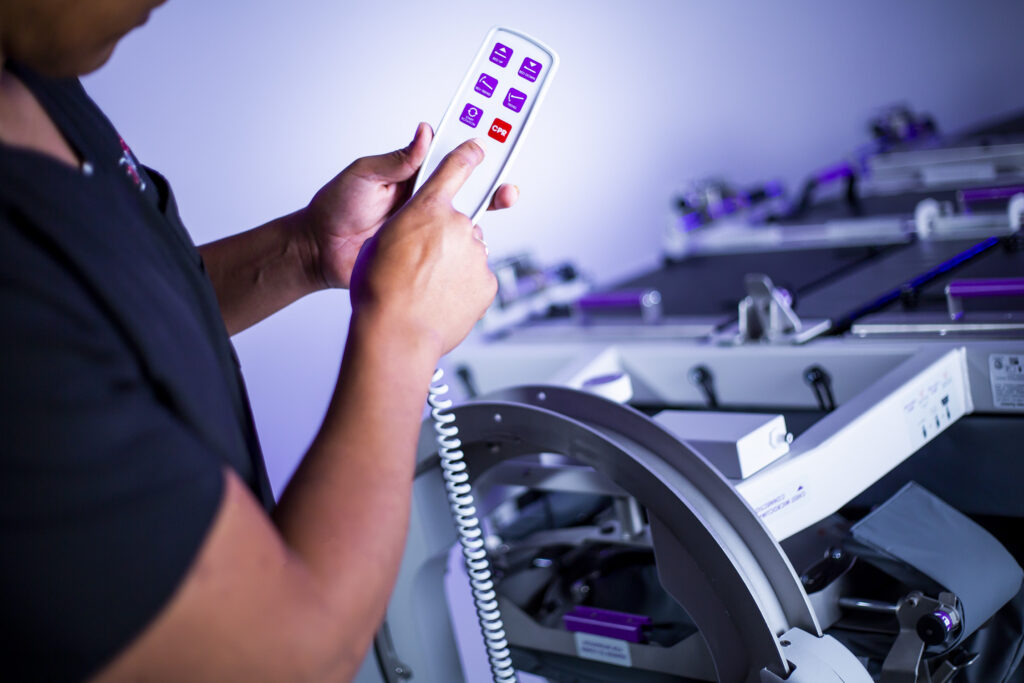
Automation Made Easy
Automation in Healthcare: Many Benefits!
Automation is a quickly growing aspect of today’s healthcare landscape to improve efficiencies and patient outcomes. The recent COVID-19 pandemic has amplified the need to find ways to reduce clinician burden due to burnout and staffing issues.1 A recent article2 highlighted some important benefits for healthcare administrators implementing automation in their facilities. Among them are improving the quality of care, safer treatment options, and increasing predictability of tasks.
While automation in healthcare takes many forms, such as artificial intelligence, robotics, and predictive analytics, automation should also be implemented, when possible, for manual tasks like patient repositioning. These efforts carry significant risks for both the clinician and patient, including lift injury and pressure injury.
Today’s intensive care environment is fraught with nurses leaving the bedside at record rates3 and the issue of clinician burnout is of high priority to healthcare leadership. Multiple articles4,5 discuss factors that contribute to job satisfaction for nurses and provide great insight for administrators to combat the current staffing shortage. Some key aspects of job satisfaction for nurses include medical resources and working conditions.
The Pronova-O2™ Automated Prone Therapy System was developed to provide essential support for critical care nursing staff to reduce the manual burden on clinicians performing the task of prone positioning. Administrators can take advantage of Pronova-O2 automated prone therapy to create a reliable medical resource for the arduous task of prone positioning and to improve working conditions for their exhausted critical care teams.
The Pronova-O2 Automated Prone Therapy System provides a safe and efficient method for positioning critically ill patients. INQUIRE NOW to request a demo for your facility! For additional information on automated prone positioning, please visit turnmedical.com or call 1-855-275-8876.
Refer to Pronova-O2 Instructions for Use for full prescribing information including risks.
References
- Gamble, Molly. (4 February 2022). Hospital CEOs’ No. 1 Concern is Staffing for 1st time in 17 years. Becker’s Hospital Review. Retrieved February 10, 2022, from https://www.beckershospitalreview.com/hospital-management-administration/hospital-ceos-no-1-concern-is-staffing-for-1st-time-in-17-years.html.
- Peterson, T. (4 November 2020). 12 Reasons Why Automated Care is Helpful in the Healthcare Industry. Retrieved February 16, 2022, from https://www.adsc.com/blog/reasons-why-automated-care-helpful-in-healthcare-industry.
- Hackett, Mallory. (11 October, 2021). Healthcare lost 17,500 jobs in September amid ongoing labor shortage. Healthcare Finance. Retrieved February 10, 2022, from https://www.healthcarefinancenews.com/news/healthcare-lost-17500-jobs-september-amid-ongoing-labor-shortage.
- Atefi N, Abdullah KL, Wong LP, Mazlom R. Factors influencing registered nurses perception of their overall job satisfaction: a qualitative study. Int Nurs Rev. 2014 Sep;61(3):352-60. DOI: 10.1111/inr.12112. Epub 2014 Jun 5. PMID: 24902878.
- Al Maqbali MA. Factors that influence nurses’ job satisfaction: a literature review. Nurs Manag (Harrow). 2015 May;22(2):30-7. DOI: 10.7748/nm.22.2.30.e1297. PMID: 25921909.






